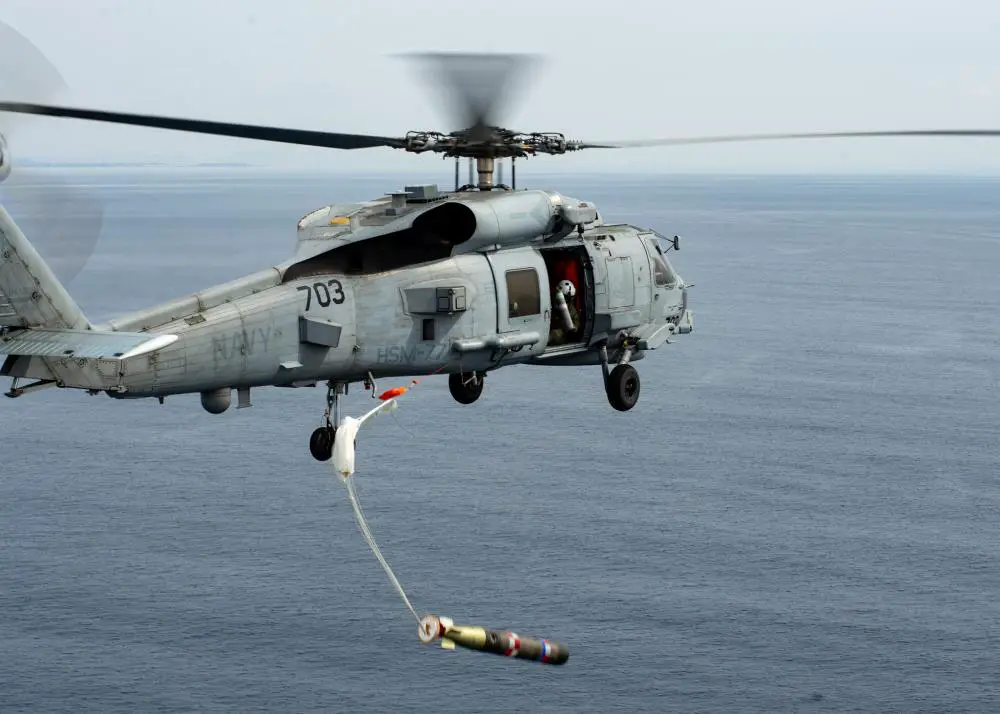Aircrews from the “Saberhawks” of Helicopter Maritime Strike Squadron (HSM) 77, the “Warlords” of HSM 51, and the Japan Maritime Self-Defense Force (JMSDF) “Mighty 59” of Air Development Squadron (VX) 51 conducted anti-submarine warfare (ASW) torpedo training in Tokyo Bay, March 8-10. Prior to this event, every torpedo exercise conducted by a forward-deployed squadron was conducted in San Diego. The benefit of this particular ASW exercise is that the forward-deployed squadron was able to practice within the region they operate in, while also strengthening bilateral capabilities between U.S. Navy and JMSDF. This training was the first time the U.S. Navy launched an inert training torpedo with JMSDF into Japanese waters, which was subsequently recovered by JMSDF Utility Landing Ship JS Yusotei 2-go (LCU 2002).
“This is the first step in an effort that started with the establishment of the first FDNF squadron, ‘The Warlords’, back in 1991,” said Cmdr. Nicholas Cunningham, HSM-77’s commanding officer. “This exercise demonstrates the U.S. Navy’s and JMSDF’s continued partnership and commitment to protecting the waterways of a free and open Indo-Pacific. The ‘Saberhawks’ are incredibly grateful for all of the multi-agency support we received from Naval Munitions Command, Commander Fleet Activities Yokosuka, Commander Carrier Strike Group 5, and Commander U.S. 7th Fleet. CFAY and NAFA have taken a major step forward in supporting local ASW training opportunities between the U.S. Navy and JMSDF.”

The exercise involved a inert torpedo being launched from an MH-60R Seahawk attached to HSM-77. The torpedo was recovered by a small boat team from the JMSDF Utility Landing Ship JS LCU 2002. An SH-60K assigned to VX-51 provided air support for the small boat team. HSM-77 and HSM-51 are forward-deployed to Naval Air Facility Atsugi and embark aboard multiple ships in the 7th Fleet area of operations. VX-51 is a squadron in the Fleet Air Force of the JMSDF based in Atsugi, Japan. This event builds on the first of its kind bilateral Anti-Submarine Warfare tracking exercise that HSM-51 and VX-51 flew together in October.
U.S. 7th Fleet exercises operational control of its units through designated Task Forces or Task Groups. These groups are organized along domain and functional lines. CTF 70 is theater strike warfare commander and theater air and missile defense commander. CTF 70 is forward-deployed to the U.S. 7th Fleet area of operations in support of a free and open Indo-Pacific. U.S. 7th Fleet is the largest forward-deployed fleet in the world, and with the help of and network of alliances and partners from 35 other maritime nations, the U.S. Navy has operated in the Indo-Pacific region for more than 70 years; providing credible, ready forces to help preserve peace and prevent conflict.












